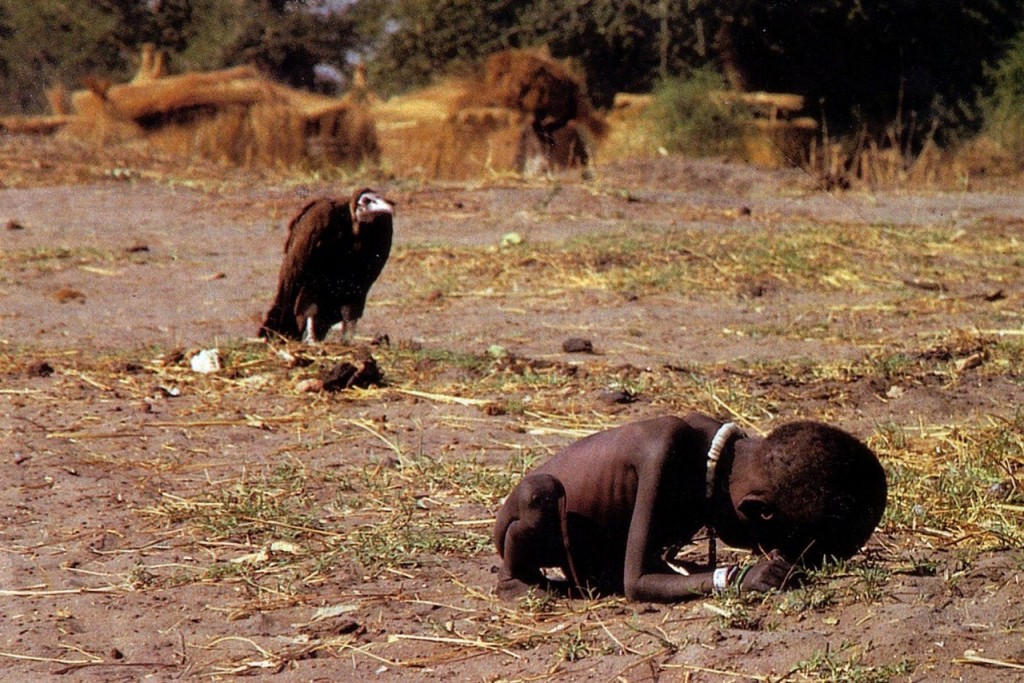Shocking title. Not a pleasant shock either, because no one wants to think that we might be guilty of exploitation.
But is that what we’re doing, when we go to photograph and raise awareness for people in less-than-ideal circumstances?
It’s a question that every traveler, missionary and humanitarian photographer has to ask themselves, because it’s too easy to be guilty of riding success on the backs of real people, called exploitation. Don’t get angry yet, stick with me just another couple of minutes because I believe that the last thing any of us wants to do is exploit those we’ve gone to photograph from motives of human compassion.
There is a story I heard recently of a photographer, who took a photograph I’ve known about for ages. The story is this:
In 1994 there was a great famine in Sudan, and the situation was desperate and heart-wrenching. Kevin Carter, a photojournalist along with several other photographers was on a trip through Sudan in March of ’94 to show the horror of a country on the brink of death. Carter, while preparing to take a photo of a toddler trying to make it to the feeding centre saw a vulture land nearby the child, waiting for the baby’s death. Carter took the picture, but not before reportedly waiting 20 minutes to try and catch the vulture spreading it’s wings.
Why not help the child to safety and food that very moment? Carter’s decision can be justifiably criticized, but there are a few more things to consider.
1. He was forbidden to touch the people in any way, as many of them were carriers of diseases.
2. He was there to take pictures.
And he did help the child.

The Photo was sold to the New York Times, and won a Pulitzer Prize
Carter became famous, and the photo even more so. But Carter’s success came at a high price, as he committed suicide only 3 months later because he couldn’t handle the horrors he’d seen in Sudan and the successive criticism.
I don’t know about you, but a part of me wants to applaud Carter, for the bravery he showed in going there at all. It takes courage to go somewhere to cement forever in others’ minds a moment in history.
At the same time there is justice in what was said in his critique, but that is the cost that photojournalists and humanitarian photographers face. The line is really fine between expoitation and awareness, and is found in the motives that can’t always be seen by everyone else. Are we going out of motives for compassion, to give someone what could be their last story or the only moment of their history of life that might ever be documented with truth and justice? Would we still take the shot even if we would be as misunderstood as Carter was?
Are we doing it for them, or for us?
There is another fine line. Them, and us. The only difference is location and circumstances, and were it only for change in birth, you or I could be that starving toddler in a sun-baked field in Sudan with a vulture hovering nearby waiting for our death. We are in another world, but not another species of humanity. What they went through could’ve been our story.
On the field there is no place for a superiority of worlds, only their story and our story crossing paths. Photographers are the people who bring two worlds together by making a permanent image of life so that many more paths can intersect, and hopefully help the suffering of people, the people just like you or me. It comes with a cost, and for someone like Carter it was too much, so think about the cost and your motives now.
If this were your story, how would you want it remembered? With a detached photo that somehow makes it’s way into another world, or a photo of bare truth that goes straight to the heart of compassion and makes a difference?
